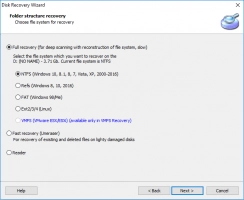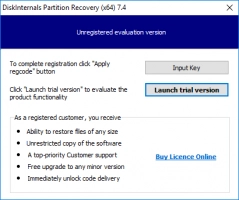How to boot to Windows 7/8/10 Safe Mode when F8 is not working
In this article you will find out:
- why f8 key isn't working
- what can you use instead
- how to protect your data
Are you ready? Let's read!
The well-known F8 key helps to start Windows in Safe Mode. By pressing it at the right time during startup, you can open the menu of additional boot options. You may face a situation, however, when this simple method does not work, especially in Windows 8 and 10. What the reason for this is, and how to enter Safe Mode, will be described in detail in this article.
Why isn't it working?
Safe Mode is a great option for troubleshooting various problems (corrupted drivers, problems loading in Windows, malware or viruses). However, using the F8 key in Windows 10 will be a little more difficult. The fact is that Windows 10 boots very quickly and you simply won't have time to press the F8 key. In addition, Windows may simply not recognize the keystroke during the boot process and all subsequent attempts will lead to nothing.
To access Safe Mode, Windows 10 has a new feature in the Advanced Boot Options menu. If that doesn't suit you, you can still access the Safe Mode feature by pressing the F8 key. But, for this, you need to do a few simple steps manually or use other more complex methods that can also put you in Safe Mode. Everything will be described in order!
What can you use instead?
Manual re-enabling
You can manually fix the “F8 key in Windows 8 not working” problem through Command Prompt with administrator privileges.
The basic command looks like this: “bcdedit / set {default} bootmenupolicy legacy”. Press Enter.
After that, start restarting your computer and continuously press the key F8 until the Advanced Boot Options menu appears. Then select Safe Mode.
To disable the F8 key, type the following command: “bcdedit / set {default} bootmenupolicy standard” and press Enter.
Use Safe Mode via the Start Menu
From the Start menu, select Settings and open the “Update & Security” section. Next, click on “Recovery”, then click “Restart now”.
During the reboot, Windows will display the “Select an Option” screen. Click “Troubleshoot”, click “Advanced Options”, and finally select “Startup Options”. Here, select the Safe Mode option.
Enter System Configuration
This can be done using the free msconfig utility: Press Windows + R and type “msconfig” into the dialog box, then press Enter.
Next, click "Download" and select "Secure Boot". Now select one of the Safe Boot options:
- Minimal
- Safe Mode with Command Prompt
- Safe Mode with Networking
Next click “Apply”, “OK” and Windows will restart in Safe Mode.
When Windows Can't Boot Normally...
Force shut down the computer until you see the Preparing for Automatic Repair screen.
Now go to the "Diagnostics of your PC" section; after that, the message “Attempting to repair” will appear.
Further, usually Windows will display the message "Automatic recovery cannot restore your computer" and will offer you two options:
- Shutdown
- Advanced options
Select “Advanced options”, then click on “Troubleshoot”.
When the screen appears, from “Advanced Options” click “Startup Options”.
Select Safe Mode by pressing the F4 key or the number 4 key on your keyboard.
When you can't log in to your desktop...
Click on “Power” in the lower right-hand corner of the Windows 10 login screen and hold the Shift key on your keyboard, then select Restart. On the next screen, select the “Options” screen, click on “Troubleshoot”, then click on “Advanced Options”. In “Startup Options”, select Safe Mode by pressing the key(s) corresponding to the Safe Mode option you want to use.
Protect your data! Use Partition Recovery
If you cannot access your data or if your files are already lost, it is best to restore them as soon as possible, so that data overwriting does not happen. It's easy to do with the best software available: DiskInternals Partition Recovery.
You can work in several recovery modes, depending on your needs. For example, if you need to view or open files, use reading mode. If you need to recover inaccessible files, the full recovery mode is best for this. You can also activate the free disk imaging function and save the successful system configuration, along with all the accumulated data.


This software supports recovery of files of any format and size and works on each disk partition as efficiently as possible. You can also download and use the free trial version of DI Partition Recovery. You need to purchase a license only if you want to save the recovered data.


